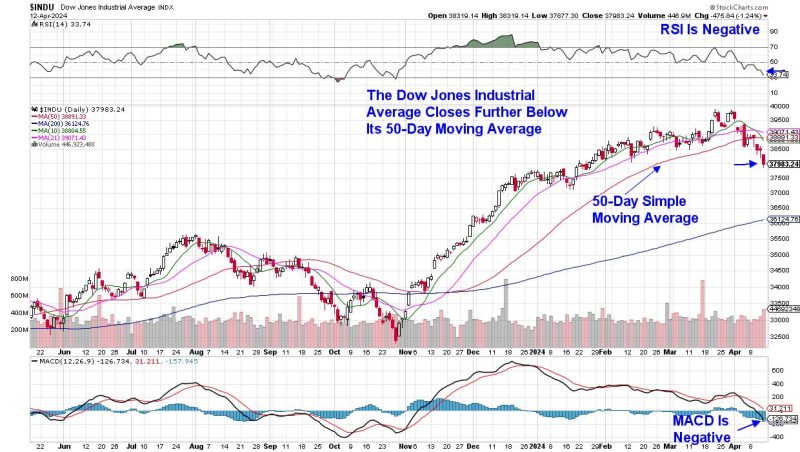The concept of Keeping Up with the Joneses has long been a metaphor for one’s striving to match or excel in the material success of one’s peers. In the world of finance, this idea transposes into the realm of stock exchanges, where the Jones—commonly referred to as the Dow Jones Industrial Average—sets an important benchmark for market performance. However, when we see a weakness in this index, it might be an indicator for a broader market correction. The question that arises then is how such weakness may foretell a broader market correction.
When analyzing the performance of the Dow Jones, we primarily focus on 30 large publicly owned companies based in the United States. These blue-chip companies represent a cross-section of sectors encompassing everything from finance to pharmaceuticals leaving no stone unturned in the economic ecosystem. Because of the diversity and stature of the companies comprising the Dow, many view it as a reliable indicator of the overall health of the US economy.
A weakness in the Dow, such as a sustained drop in its composite stocks or a decrease in its reported average, may be a forewarning of a market correction because such a decline often precedes a larger-scale reassessment of stock values. It could seem like the market is readjusting after a period of overvaluation. This, in the world of finance, is known as a market correction.
Another aspect to understand is the psychological impacts on the market participants. When investors observe a weakness in this revered index, it naturally raises concerns regarding the overall market’s health. These concerns may drive shareholders to sell off their stocks, contributing to a downward trend in the financial markets. As the Dow’s fluctuation may broadly influence market sentiment, a dip in this index can act as a catalyst for a larger sell-off, thus leading to a market correction.
However, it’s important to note that weakness in the Dow doesn’t automatically prelude a market correction. It is one variable among many that impact the complex environment of the financial world. Other factors might include geopolitical events, fiscal/monetary policy shifts, or sudden changes in key economic indicators. Therefore, investors should always view the Dow’s performance in the context of a broader set of information and not make hasty decisions based solely on its fluctuations.
Market corrections, signified by a 10% or more drop in the value of securities from their most recent high, are quite normal in the investing world. They often act as a ‘reality check’ for the market, restoring balance between economic reality and securities’ market prices after a period of over-optimism and over-buying by investors.
Therefore, keeping a watchful eye on the Dow Jones Industrial Average and acknowledging it as a potential early signal of a larger market correction is crucial. It’s also important for investors to be prepared for market corrections, recognizing them as part and parcel of the investing journey, rather than something to fear. By maintaining a diversified portfolio and resisting the urge to panic-sell when a market correction occurs, investors can weather these storms and come out even stronger on the other side.
In conclusion, it is evident that while the Dow Jones Industrial Average is an important barometer of the financial climate because it covers a wide array of sectors, its weakness is only one amongst an array of factors that might signal a broader market correction. Nevertheless, it remains a vital element that investors should continually monitor.




